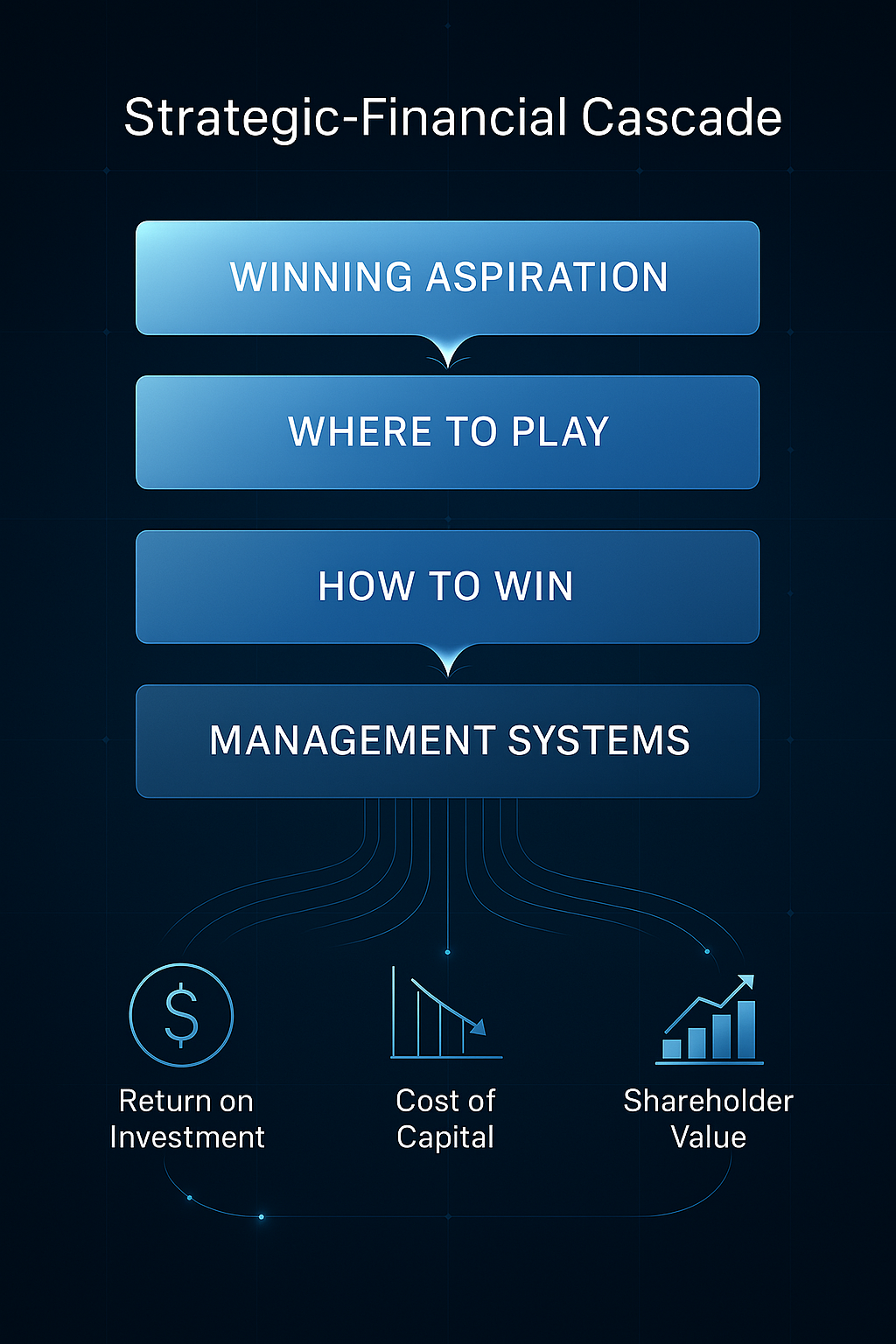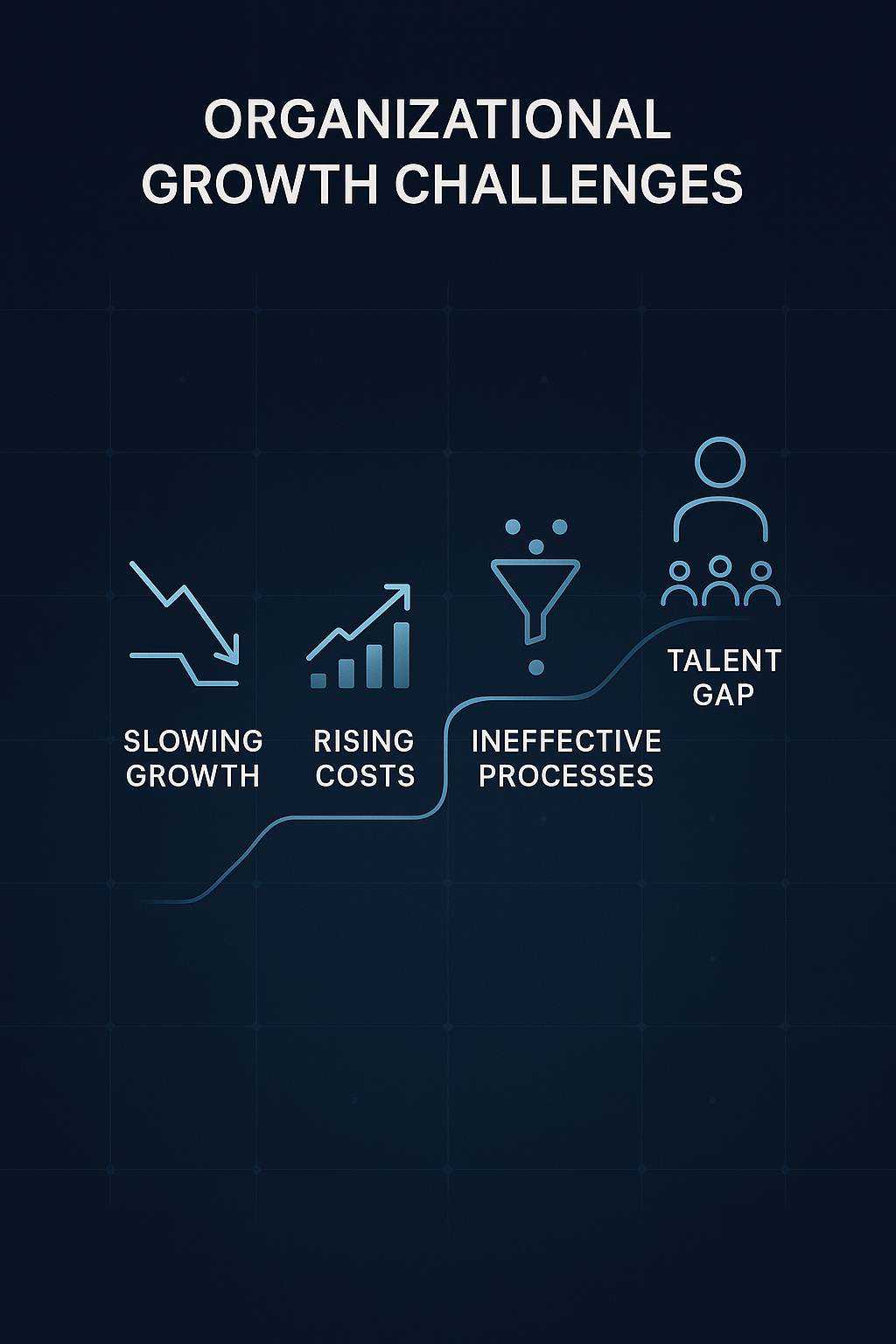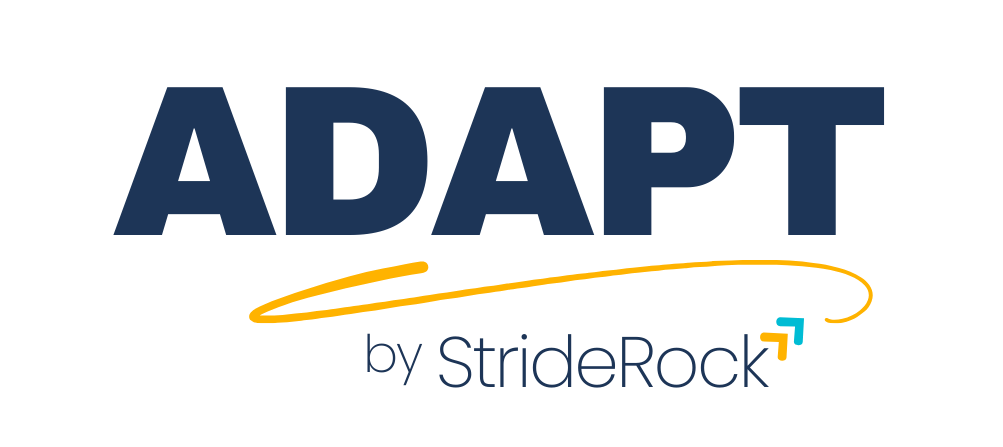The Critical Intersection
In many organizations, strategy and finance operate as separate domains, with strategy focused on market positioning and competitive advantage while finance oversees resource allocation and performance measurement. This artificial separation often leads to a fundamental disconnect: strategies that look compelling on paper but fail to deliver sustainable financial results, or financial decisions that optimize short-term metrics while undermining long-term competitive position.
Research from McKinsey shows that companies with strong links between their strategic planning and financial planning processes deliver shareholder returns 2.3 times higher than companies with weak links between these processes (Bradley et al., 2018). Yet many organizations struggle to effectively integrate these critical functions.
This article examines the crucial intersection between strategy and finance, offering a framework for strategic-financial integration that enhances both the quality of strategic choices and the financial outcomes they produce.
The Strategic-Financial Divide: Origins and Implications
The division between strategy and finance often reflects a more fundamental organizational disconnect—strategy is concerned with the external marketplace while finance primarily addresses internal operations and capital allocation. This separation has deep historical roots in management practice.
Strategic planning emerged in the 1960s and 1970s as a discipline focused on analyzing market opportunities and positioning products competitively. Meanwhile, financial planning developed largely as an internal control and resource management function. As Roger Martin, former Dean of the Rotman School of Management, observes: “Strategy is fundamentally about making choices that lead to desired customer actions, while planning involves decisions about internal activities like how many factories to build or people to hire” (Martin, 2014).
This divide manifests in several problematic ways:
Strategic plans that lack financial rigor
Many strategic initiatives are developed without thorough financial analysis, leading to unrealistic growth projections or underestimated resource requirements.
Financially-driven decisions that undermine strategy
Cost-cutting measures or investment decisions made solely on financial metrics may erode strategic capabilities or competitive positioning.
Disconnect between long-term aspirations and short-term metrics
Organizations often struggle to reconcile ambitious strategic goals with quarterly financial targets (Kaplan & Norton, 2008).
Planning processes that operate in silos
Strategic planning and financial budgeting often occur as separate cycles with different timelines, participants, and objectives (Koller, Goedhart, & Wessels, 2020).
Framework for Strategic-Financial Integration
Effective integration of strategy and finance requires more than simply adding financial projections to strategic plans or incorporating strategic initiatives into budgets. It demands a fundamental reconceptualization of how these disciplines interact across the strategic choice cascade.
1. Strategic Choices Through a Financial Lens
The strategic choice cascade, as described by A.G. Lafley and Roger Martin in “Playing to Win” (2013), provides a useful framework for examining this integration:
Winning Aspiration: Financial considerations should inform how success is defined. A winning aspiration should include explicit financial dimensions—not just market leadership or customer impact metrics. Research by McKinsey found that companies that explicitly set earnings growth goals (beyond revenue targets) were more likely to achieve superior financial performance (Bradley et al., 2018).
Where to Play: Market selection decisions should incorporate rigorous financial analysis. As Ram Charan notes in “What the CEO Wants You to Know” (2017), truly effective organizations assess potential markets not just for strategic fit but for their ability to generate superior returns on invested capital.
How to Win: Competitive approaches must be financially sustainable. Whether pursuing cost leadership or differentiation, organizations need to ensure that their approach can deliver attractive margins over time. The Boston Consulting Group’s research on value patterns reveals that different competitive positions require distinct financial models to succeed (Mocker, Ross, & Ciano, 2014).
Required Capabilities: Investment in capabilities must be financially disciplined. Organizations need to assess both the cost of developing key capabilities and the financial returns they’re expected to generate. Research from Bain & Company shows that companies that systematically invest in differentiated capabilities outperform peers financially by 30% (Blenko, Mankins, & Rogers, 2010).
Management Systems: Performance metrics must integrate strategic and financial dimensions. The balanced scorecard approach developed by Kaplan and Norton (2008) explicitly links strategic objectives to financial outcomes, operational metrics, and capability development measures.

2. Revenue Generation vs. Cost Management: A False Dichotomy
One common manifestation of the strategy-finance divide is the artificial separation between revenue-focused activities (often considered “strategic”) and cost-focused initiatives (frequently viewed as “financial”). This dichotomy misses a crucial insight: effective strategy must address both value creation and cost management.
As Michael Porter observed in his seminal work on competitive advantage (1985), sustainable competitive advantage comes either from delivering comparable value to customers at a lower cost or providing greater value that commands premium pricing. Both approaches require tight integration of strategic positioning and financial considerations:
Cost Leadership Strategy: Requires systematic understanding of cost drivers across the value chain and disciplined investment in cost-reducing capabilities. The CFO’s expertise in cost analysis must be integrated with strategic market positioning decisions.
Differentiation Strategy: Demands clear understanding of which investments in differentiation will command price premiums that exceed their costs. The strategy team’s market insights must be combined with rigorous financial analysis.
Walmart’s remarkable success illustrates this integration in action. Their consistent execution of a cost leadership strategy wasn’t just about cutting costs—it involved strategic choices about store locations, product assortment, and supplier relationships, all undergirded by sophisticated financial analysis that ensured their cost advantages translated to superior returns on invested capital (Ghemawat, 2020).
3. Beyond Planning: Integration in Decision-Making and Execution
True strategic-financial integration extends beyond the annual planning cycle to everyday decision-making and execution. Organizations that excel in this dimension exhibit several distinctive characteristics:
Resource Flexibility: They maintain the ability to reallocate resources quickly as strategic conditions change. Research by McKinsey shows that companies that dynamically reallocate resources generate 30% higher returns to shareholders than companies with more static resource allocation (Hall, Lovallo, & Musters, 2012).
Decision Rights Clarity: They establish clear processes for making strategic investment decisions, with explicit roles for both strategy and finance functions. A Harvard Business Review study found that companies with clear decision-making protocols were 95% more likely to be high-performing (Rogers & Blenko, 2006).
Integrated Performance Dialogues: Their performance reviews address both strategic progress and financial outcomes simultaneously, rather than treating them as separate conversations. This integration helps ensure that short-term financial decisions don’t undermine strategic positioning.
Strategic Resource Allocation: They allocate capital and talent based on strategic priorities rather than historical patterns or organizational politics. Research by Bain & Company indicates that companies that actively reallocate resources to strategic priorities generate more than twice the shareholder returns of companies that allocate resources based primarily on prior-year budgets (Mankins & Steele, 2009).
Implementation Challenges and Solutions
Despite its clear benefits, achieving true strategic-financial integration remains challenging for many organizations. Common obstacles include:

Cultural Differences: Strategy and finance often attract professionals with different backgrounds, skills, and perspectives. Bridging these cultural differences requires concerted leadership effort and cross-functional development experiences.
Misaligned Processes: Strategic planning and financial budgeting cycles frequently operate on different timelines with distinct methodologies. Aligning these processes doesn’t necessarily mean combining them, but rather ensuring they inform each other effectively.
Capability Gaps: Many organizations lack professionals who are fluent in both strategic and financial concepts. Developing “bilingual” leaders who understand both domains is essential for effective integration.
Performance Metrics: Traditional performance measures may reinforce the strategy-finance divide by focusing exclusively on either strategic milestones or financial outcomes. Integrated metrics that connect strategic progress to financial results are needed.
Organizations seeking to strengthen strategic-financial integration can take several practical steps:
1. Create Integrated Planning Teams
Establish cross-functional teams with both strategy and finance expertise to develop strategic plans and translate them into financial implications.
2. Implement Rolling Forecasts
Move beyond rigid annual budgeting toward more dynamic financial planning that can adapt to changing strategic conditions and opportunities.
3. Develop Integrated Metrics
Create performance measures that link strategic milestones to financial outcomes, ensuring that strategy execution is tracked through both operational and financial lenses.
4. Foster Cross-Functional Experience
Provide opportunities for finance professionals to gain experience in strategy roles and vice versa, building “bilingual” capabilities across the organization.
5. Enhance Analytical Capabilities
Invest in data and analytics capabilities that can provide both strategic and financial insights from common sources of truth.

The StrideRock ADAPT™ Accelerator: Enabling Financial Value Realization
While strategic-financial integration is conceptually compelling, many organizations struggle with the human dimension of implementation. Even when strategic choices are financially sound on paper, their translation into financial results depends on stakeholders’ ability to effectively navigate complex human dynamics, align diverse interests, and drive coordinated action.
This is where the StrideRock ADAPT™ Accelerator provides distinctive value. ADAPT equips organizational stakeholders with evidence-based methodologies for strategic persuasion and stakeholder alignment that directly contribute to financial value realization in several critical ways:
01. Uncovering Hidden Financial Value OpportunitieHere
The ADAPT methodology’s systematic approach to information gathering helps leaders identify potential financial value that might otherwise remain obscured. The Discover phase employs proprietary cognitive engagement techniques that activate analytical thinking and reveal critical insights about stakeholders’ underlying interests, concerns, and priorities.
In cross-functional strategic initiatives, these techniques can uncover cost reduction opportunities, revenue enhancement possibilities, or resource allocation inefficiencies that weren’t visible through conventional financial analysis alone. By creating the psychological conditions for open dialogue, ADAPT enables organizations to tap into the distributed knowledge that exists across functions and levels—knowledge that often contains valuable financial insights.
02. Building Alignment Around Financial Priorities
Financial value creation frequently requires difficult tradeoffs and resource allocation decisions. The ADAPT methodology’s Align and Problem-Solve phases provide structured approaches for building genuine alignment around these challenging choices.
Rather than relying on positional authority to drive financial decisions, leaders equipped with ADAPT capabilities can create psychological safety for honest discussion about financial realities and constraints. This enables more transparent dialogue about the financial implications of different strategic options and helps build sustainable commitment to decisions that optimize overall financial value rather than functional or departmental interests.
03. Communicating Financial Value Persuasively
Financial value creation depends not just on making sound strategic choices, but on communicating them effectively to secure necessary resources and support. The ADAPT methodology enhances leaders’ ability to frame financial opportunities and challenges in ways that resonate with diverse stakeholders.
Whether communicating with board members about capital allocation decisions, engaging with operational teams about efficiency initiatives, or negotiating with external partners about value-sharing arrangements, ADAPT-trained leaders can more effectively translate financial considerations into compelling narratives that drive action.
04. Securing Sustainable Financial Agreements
The Trust phase of the ADAPT methodology focuses on securing sustainable agreements that translate strategic choices into coordinated action and lasting results. This capability is particularly valuable in financial contexts, where agreements often involve complex allocation of resources, risks, and rewards.
Leaders equipped with ADAPT capabilities can craft financial agreements that balance short-term results with long-term value creation, specify clear financial accountability measures, and anticipate potential implementation challenges. These skills are essential whether negotiating internal budget allocations, establishing financial performance metrics for strategic initiatives, or structuring external financial partnerships.
05. Accelerating Financial Impact Through Strategic Persuasion
Perhaps most importantly, the ADAPT methodology accelerates the realization of financial value by enhancing leaders’ ability to drive coordinated action. Financial outcomes ultimately depend on execution effectiveness, which in turn requires the ability to influence stakeholders with diverse priorities, perspectives, and interests.
By providing a structured approach to strategic persuasion, ADAPT helps organizations close the gap between financially sound strategic choices and actual financial results. Leaders can more effectively navigate resistance to change, secure cross-functional collaboration, and maintain momentum through implementation challenges—all critical factors in turning financial strategies into financial outcomes.
The ADAPT™ Accelerator thus serves as a powerful complement to technical financial expertise, providing the influence and alignment capabilities needed to translate financial insights into organizational action. In a business environment where the gap between strategy and execution is often the primary barrier to financial value creation, these capabilities represent a critical competitive advantage.
Creating Sustainable Value
The integration of strategy and finance isn’t merely an organizational design preference—it’s essential for creating sustainable value in today’s complex business environment. As competition intensifies and disruption accelerates, organizations need strategies that are both competitively compelling and financially sound.
The most successful companies don’t view strategy and finance as separate disciplines. Instead, they recognize that strategic choices must be informed by financial realities, and financial decisions must support strategic positioning. By bridging this divide, organizations can make better choices about where to play and how to win, allocate resources more effectively to strategic priorities, and ultimately deliver superior financial returns.
As management pioneer Peter Drucker observed decades ago: “Profit is not the purpose of a business, but rather the test of its validity.” This insight captures the essence of strategic-financial integration—financial outcomes are how we measure the effectiveness of our strategic choices, and strategic positioning is how we ensure sustainable financial performance.
Organizations that can effectively integrate these perspectives are positioned not just to win in today’s markets, but to create lasting value through cycles of disruption and change.




